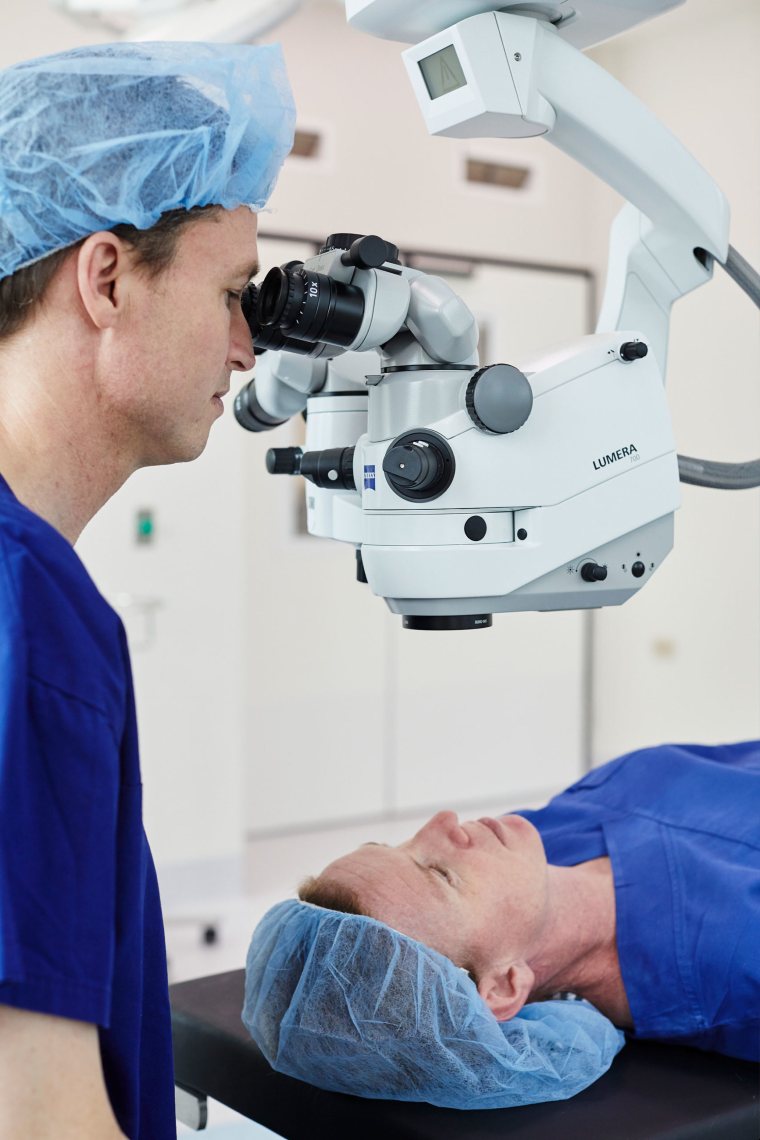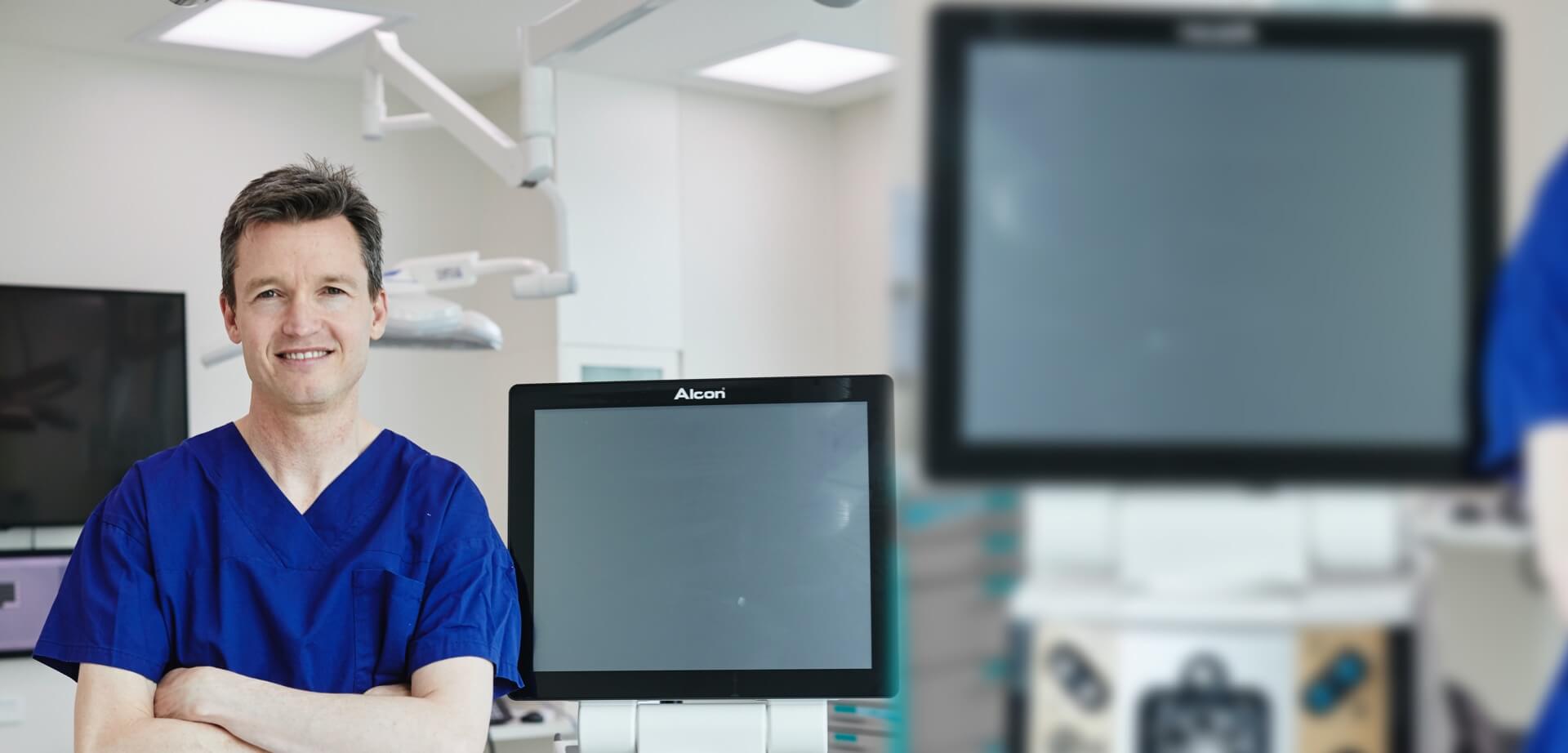All cataract surgeries result in the loss of some endothelial cells. The phacoemulsification stage of the surgery has the biggest impact on cell loss. The phacoemulsification instrument makes very fine vibrations (35 000 to 45 000 cycles per second), and it is these vibrations that allow the nucleus, the central part of the cataract, to be divided into segments and then removed. Approximately 10 to 15 percent of cells are lost, this number greater for larger, denser or more advanced cataracts. There have been significant developments in surgical technique that minimise endothelial cell loss. Most patients having cataract surgery have high endothelial cell counts. A small loss in these cases from cataract surgery is therefore of no clinical significance.
Patients with Fuchs endothelial dystrophy have a reduced endothelial cell number as a result of their dystrophy. With cataract surgery this endothelial cell loss has greater significance since the pre-surgery endothelial cell count is already low.
The cornea may become swollen after cataract surgery. It may take several months for the cells to return to normal function and for corneal clarity to be returned. In mild forms it may result in blurred vision for a few hours on waking. On rare occasions the cornea does not return to its clear transparent state, and a corneal transplant is required.
Developments in cataract surgery techniques have resulted in better protection for the endothelial cell layer. These developments have been incorporated into current cataract surgical practice.
LACS has theoretical benefits for endothelial cell protection. Because the laser divides the cataract into pieces, a task that until now has been performed by phacoemulsification, the phacoemulsification is only required to remove the segments. As a consequence, less phacoemulsification is required during the operation. Accordingly there is likely to be less endothelial cell loss, an associated lower rate of corneal deterioration and the need for a corneal transplant is reduced.








